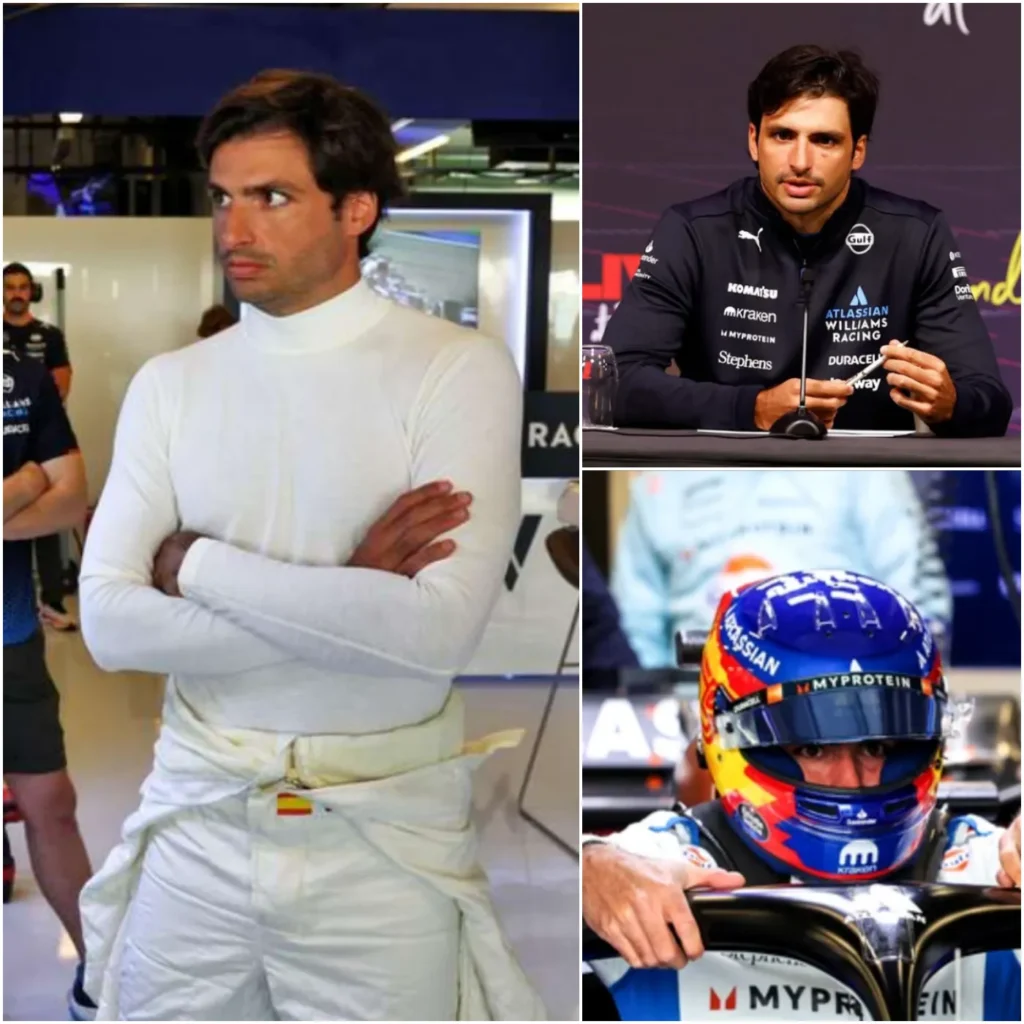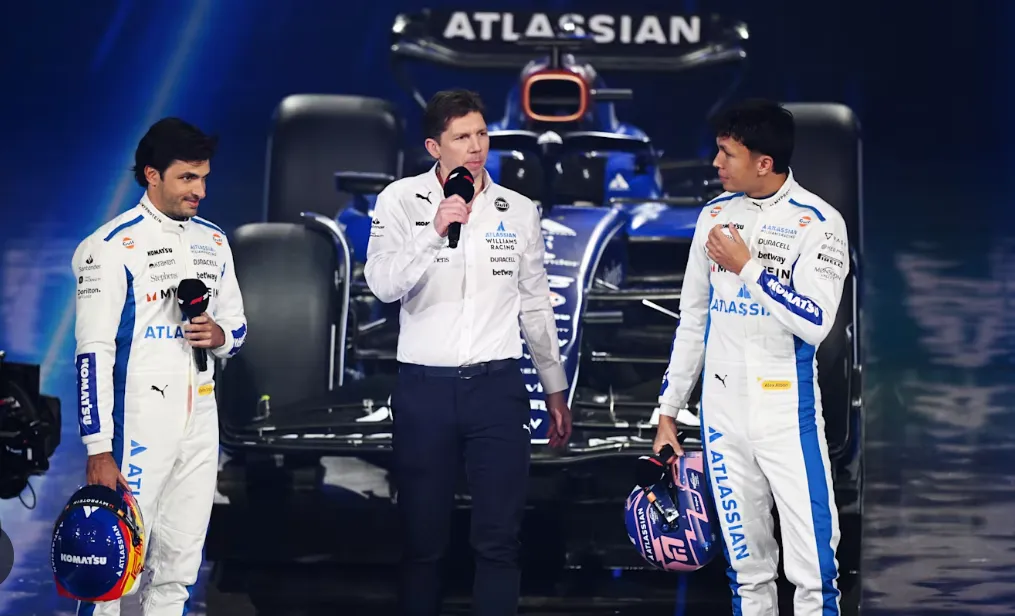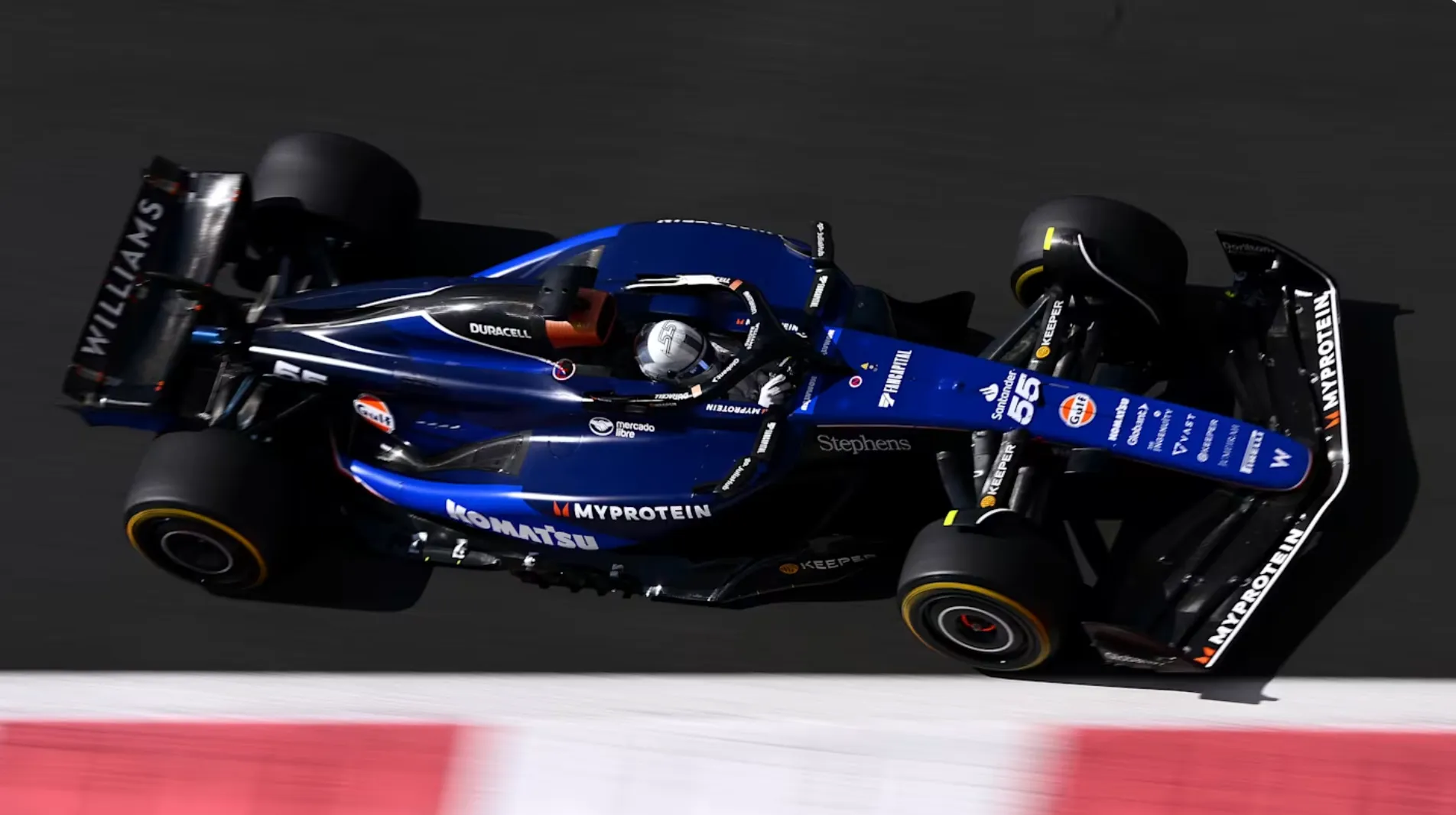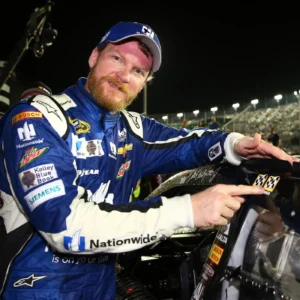Carlos Sainz Reveals the ‘Biggest Change’ at Williams and Predicts His Adaptation Timeline

Carlos Sainz has identified adapting to a new power unit as the “biggest change” he has faced since joining Williams Racing, with the former Ferrari driver set to race with a Mercedes engine for the first time in his Formula 1 career. This transition marks a significant shift for the Spanish driver, who has previously competed with Renault, Honda, and Ferrari power units during his decade-long tenure in the sport.
Sainz’s Experience With Multiple F1 Teams
Sainz is no stranger to switching teams, having raced for Toro Rosso, Renault, McLaren, Ferrari, and now Williams. While this frequent movement has both advantages and challenges, Sainz views his adaptability as a key strength.
Speaking at the F1 75 Live event, Sainz shared insights into how different teams operate, emphasizing that experiencing multiple working cultures has broadened his understanding of Formula 1 team dynamics. “That’s me having raced for 50 percent of the teams in Formula 1 in 10 years. That’s a different team every two years—I don’t know if it’s a good or a bad thing! But it has given me a lot of experience and insight into different team structures, cultures, and methods of working.”
While Ferrari operates with a distinctly Italian approach, Williams follows a British-based philosophy, which, according to Sainz, requires an adjustment period. However, the Spaniard remains confident in his ability to integrate seamlessly into the new environment. “This is definitely the biggest switch—from an Italian base back to a British-based team. But it’s nothing that I haven’t seen before, and it’s a challenge I’m looking forward to.”

Adapting to the Mercedes Power Unit
One of the most significant adjustments for Sainz is learning to work with a Mercedes power unit for the first time in his career. Having spent the past three seasons with Ferrari engines, transitioning to Mercedes presents both technical and operational differences. “When you change teams, the biggest thing you feel immediately is the power unit. The noises, the vibrations, the sound—everything changes completely. Even though I focused on aerodynamics and tires in my first laps in Abu Dhabi, the primary adaptation was getting used to the Mercedes engine.”
Sainz elaborated on the complexity of modern F1 engines, highlighting that the power unit’s integration affects many aspects of his driving experience. “The way the power unit operates in terms of switches, deployment, and battery management is a big shift. There are many settings we tweak mid-race, from energy recovery to fuel efficiency, and adapting to how Mercedes does it compared to Ferrari is a challenge.”
How Long Will It Take Sainz to Fully Adapt?
Given the limited testing opportunities in modern F1, Sainz estimates that it will take him approximately half a season to fully understand the intricacies of his new car. “Normally, with only three days of pre-season testing—which amounts to just one and a half days per driver—it takes around half a year to understand all the little details of a car. If we had more testing, this process would be shorter.”
However, Sainz remains optimistic about being competitive from the start, even if he hasn’t yet mastered every nuance of the FW47. “If you’re good at adapting and put in the right work during the winter, you can be competitive straight away. But that last tenth of performance comes as the season progresses—when you work better with engineers and maximize the car’s full potential.”
Inside Williams’ 2025 Car: The FW47
Williams has high expectations for the FW47, its latest challenger for the 2025 season. With team principal James Vowles leading the charge, the team has invested heavily in aerodynamic efficiency and chassis development.
At the F1 75 Live season launch, Williams unveiled the car’s new blue livery, which Sainz humorously acknowledged: “I like blue—it’s an easier color to match with other things!”
But beyond aesthetics, the FW47 represents a key step forward in Williams’ long-term ambition to return to the front of the grid.
Can Sainz and Williams Compete in 2025?
With Sainz’s arrival, Williams hopes to accelerate its trajectory towards the midfield battle—and possibly challenge the top teams in select races.
Sainz, a four-time Grand Prix winner, brings invaluable experience to the team. His ability to extract maximum performance from cars that aren’t necessarily front-runners will be crucial in helping Williams close the gap to competitors like McLaren, Aston Martin, and Alpine. “There’s no doubt we can be competitive. The question is how quickly we can extract the maximum out of the car. Every small gain matters, and I’ll be working closely with the engineers to push the FW47 to its limits.”

The Road Ahead for Sainz and Williams
The 2025 season presents a new chapter for both Carlos Sainz and Williams Racing. With a Mercedes power unit, an evolving car concept, and a determined driver at the helm, the team’s trajectory is promising.
But as Sainz emphasized, patience will be key: “It’s all about learning. We need to take it race by race, refine our understanding of the car, and ensure we maximize every opportunity.”
Will Sainz’s experience and adaptability help Williams take a significant step forward in 2025? Only time will tell—but the journey promises to be an exciting one.
A New Era for Sainz and Williams
Carlos Sainz’s transition to Williams is more than just a team switch—it represents a fresh start and a new challenge that could shape his future in Formula 1. With his experience, adaptability, and determination, he has the potential to help Williams take a big step forward in 2025.
However, success won’t come overnight. The learning curve associated with a new power unit, a different engineering philosophy, and limited testing opportunities means Sainz will need time to fully maximize his performance. That said, his proven track record of adjusting to new environments suggests he could be a key player in Williams’ resurgence.
As the 2025 season unfolds, all eyes will be on Sainz and Williams to see how well they adapt, evolve, and compete against Formula 1’s top teams. If he can quickly find his rhythm, there’s no doubt that he and Williams could be in for an exciting and competitive season ahead.




